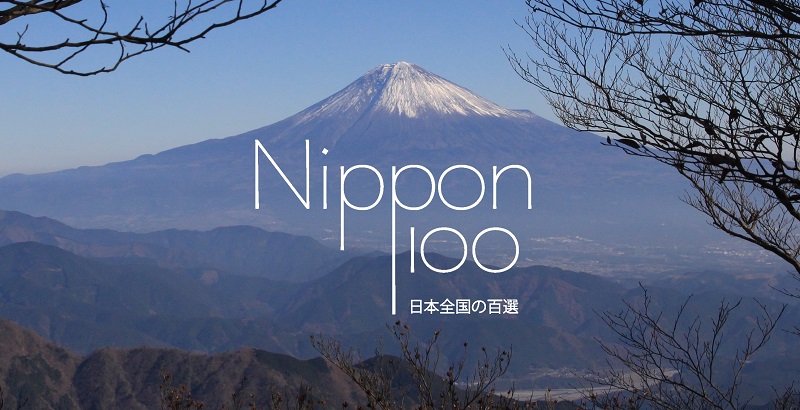“That landscape is definitely not Japanese. Must be Switzerland or an illusion of Switzeland!”, German architect Bruno Taut said when discovering the village in 1935. For us, those words made sense as the thatched roof houses of Gifu prefecture were also looking like another Swiss speciality: the world famous Toblerone chocolate. But most of all, Shirakawa-go is an unforgettable view. Along with neighboring Gokayama in Toyama prefecture, the village is a World Heritage one since 1995.
Occasional snow bunches in the middle of rice fields. Winter did not leave Shirakawa-go long ago, the village in the middle of the Hida mountains, aka the Northern Alps. Two to four meters usually fall each winter, explaining the houses unique shape, nowhere else to be seen in Japan.

 |
 |
Shirakawa-go, along with Gokayama, more than being World Heritage sites, are a landscape of the 100 Heisei landscapes list. The sight is famous in every season, from the pastoral spring to the colorful fall, without forgetting the white winter, where the house are lit up at night.
Shirakawa-go living village
Exploring Shirakawa-go is easy by foot. And the village is not a museum. About 550 inhabitants live in the main area (and 1600 in the whole area). Among the 114 existing gassho-zukuri (the thatched roofs house, literally “praising-hands-shape buildings”), 59 are used as proper houses.
All those traditional houses are oriented in the same direction, with the two sides of the thatched roof facing East and West, to hasten the snow melting. And the openings are all facing South or North which allows a nice ventilation (the winds being strong with the sea of Japan not too far away, down the valley).
 |
 |

Visiting a Gassho-zukuri
Several houses are open to tourists, including the Wada, Kansa and Nagase ones. The visit is quite interesting, allowing to understand the 400 years-old lifestyle of the inhabitants. The first floor was dedicated to the large family (about 20/30 people per house, of at least 3 generations) while the upper levels were used for storage and work during the long winter. One of the main activity was the silkworm farming.
In the houses, the fire was essential for life, located in the center of the first floor, but dangerous at the same time – the whole structure being made of wood and thatch. A small window in between the first and second floor allowed the second and third sons of the family to watch it all day long.
 |
 |


 |
 |
Solidarity first in Shirakawa-go
Another feature of Shirakawa we found specially interesting was the strong relationship between all the inhabitants, as a result of their long time isolation. Thanks to that, the village is truly a living one, and the knowledges about traditions and craftsmanship are still being passed down to the younger generations. The villagers association also originated the World Heritage’s procedures in the 1970s.

 |
 |
Among the two photographs above, the left one shows an house with a pretty old roof, while the right one features a brand new one!
Shirakawa-go acting for the future
Following the World Heritage recognition in 1995, the tourists arrived. Once again, the inhabitants were trying to do their best of the situation, “in order to keep a good balance between the visitors and the daily life”, Tatsuya Ozaki explains. They took that as a chance to improve the language skills of the local school pupils. Nowadays the kids are regularly directing the travelers around, and that’s part of their homework.
And English is not the only special subject learn at school. As part of the preservation program, they study the village history and traditions, as well as carpentry skills. “Allowing them to take part in the roof renovation as soon as possible, continues Tatsuya Ozaki. And that’s a way to involve them in the village way of life and maybe encourage them to stay here, or come back in the future to settle”.
 |
 |


Fires are a big issue in Shirakawa-go, with several accidents in the past. As a result, the safety regulation is strict. For instance candles and fireworks are prohibited. And four times a day, a crew of volunteer firemen from the village patrols around.
 |
 |
 |
 |
At the other end of the village, after crossing the Shogawa river, the open air museum of Ogomachi allows to explore 25 more thatched roof houses gathered there from several locations (500 yens, from 8:40am to 4 or 5pm). A night in the village is also another way to experience it, with less tourists. The Kanjiya Minshuku or Magoemon guesthouse are convenient options.
Anime pilgrimage in Shirakawa-go
Last but not least, the Hatogaya Hachiman shrine is another attraction of Shirakawa. Two kilometers away from the center, the place is home to the main doburoku matsuri, held each year in October and was featured in an anime a few years ago. Since the broadcast of Higurashi no Naku Koro Ni (When they cry – Higurashi), the shrine has thus noticed a new kind of tourism.
 |
 |
How to get there?
The easiest way to reach Shirakawa-go is by bus, either from Takayama in Gifu’s prefecture (one hour away) or Kanazawa on Toyama’s side (about 90 minutes away). Several direct buses are also running from Nagoya (3600 yens for a 3 hours ride).








